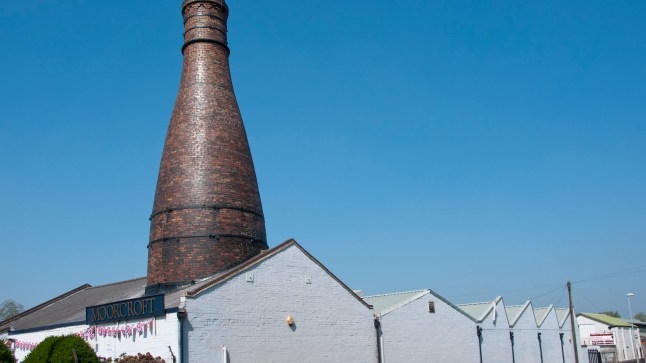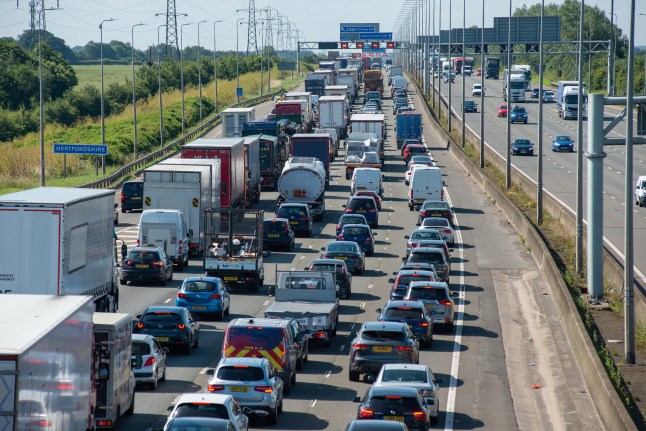
Owners of 54 models of old classic cars could face eye-watering tax hikes very soon from the DVLA.
Vehicle Excise Duty (VED), often known simply as road tax, sees people who drive or keep their cars on public roads pay an annual fee. But this year, the charge is set to increase for almost all petrol and diesel owners.
First-year VED rates will double, meaning that brand-new polluting models may pay more to be behind the wheel.
But cars registered between 1984 and 2001 will be hit hard by the tax overhaul as they fall under a different tax system. Experts say drivers in the lower power bracket will pay £220 in 2025/26, a hike of about £10 from £210 per year.
The tax increase affects Audis, Volkswagens, and even Lamborghinis. Those with more powerful engines above 1549cc will have to cough up £15 more every year, shooting up from £345 to £360.
But vehicles producing more than 255 g/km of carbon dioxide will see a £2,745 increase.
The rules will be rolled out by the Driver and Vehicle Licensing Agency (DVLA) from April.

New roadworthy car owners are expected to pay an additional £418 on average, according to GoCompare.com.
Diesel cars will be stung the hardest, however. The average increase will be £1,113, about double the rise facing petrol drivers.
Zero-emission vehicle drivers – think electric cars (EVs) – will no longer benefit from being tax-free for the first year.
Full list of vehicles affected

- Audi RS6 4.0 TFSI V8
- Audi S8 4.0 TFSI V8
- McLaren GT 4.0T V8
- Audi R8 5.2 FSI V10
- Lamborghini Huracan 5.2 V10
- Chevrolet Corvette Stingray 6.2 V8
- Volkswagen Amarok 3.0 TDI
- Aston Martin DBX 4.0 V8
- Ferrari Roma 3.8T V8
- Audi SQ7 4.0 TFSI V8
- Range Rover Sport 4.4P V8
- Jaguar F-Pace 5.0 P575 V8
- Aston Martin DB12 4.0 V8
- Porsche 911 3.7T 992 Turbo
- Jeep Wrangler 2.0 GME
- Ford Ranger 2.0 TD EcoBlue
- Audi RSQ8 4.0 TFSI V8
- Lotus Emira 3.5 V6
- Bentley Continental 4.0 V8
- Audi SQ8 4.0 TFSI V8
- Aston Martin Vantage 4.0 V8
- Toyota Hilux 2.8D
- Porsche Macan 2.9T V6
- Mercedes-Benz SL55
- Range Rover 4.4 P530 V8
- Mercedes-Benz AMG GT 4.0 V8
- Porsche 718 Cayman 4.0 GT4
- Lamborghini Urus 4.0 V8 BiTurbo
- Audi RS7 4.0 TFSI V8
- Ford Mustang 5.0 V8
- Toyota Land Cruiser 2.8D
- Bentley Continental 6.0 W12
- Mercedes-Benz GLC63
- Ford Ranger 3.0 V6
- INEOS Grenadier 3.0P
- Range Rover 4.4 P615 V8
- Land Rover Defender 90 5.0 P425 V8
- Rolls-Royce Ghost 6.75 V12
- Ford Ranger 3.0 EcoBlue
- Mercedes-Benz G63
- Ferrari Purosangue 6.5 V12
- Rolls-Royce Cullinan 6.75 V12
- Alfa Romeo Stelvio 2.9 V6 Bi-Turbo
- Mercedes-Benz GLE63
- Maserati Levante 3.0 V6
- Porsche Cayenne 4.0T V8
- BMW M8 4.4 V8
- Maserati MC20 3.0 V6
- Land Rover Defender 110 5.0 P425 V8
- Mercedes-Benz G400D
- Lamborghini Revuelto 6.5 V12
- Bentley Bentayga 4.0 V8
- BMW X7 M 4.4 V8
- BMW X6 M 4.4 V8
- BMW Alpina XB7 4.4 V8
- Bentley Flying Spur 4.0 V8
- Maserati Levante 3.8 V8
- BMW X5 M 4.4 V8
- Mercedes-Benz GLS63h
People who buy hybrid cars from April will pay an extra £135 and £327 extra on average. GoCompre says this is based on the model, however.
Tax rates are largely based on how much CO2 fossil-fuel-guzzling cars spew out – higher emission vehicles are placed in higher VED bands.
More Trending
Vehicles manufactured after 2001 don’t have the size taken into account.
VED increases will be in line with inflation, HMCR confirmed, much the same as it did last year.
HMRC said: ‘This measure will uprate the Vehicle Excise Duty rates for cars (excluding first year rates) and all other rates for vans, motorcycles and motorcycle trade licences by the Retail Price Index, and will reflect the inclusion of zero-emission vehicles in Vehicle Excise Duty from 1 April 2025.
‘This is a standard uprating that comes into effect from 1 April 2025.’
Get in touch with our news team by emailing us at webnews@metro.co.uk.
For more stories like this, check our news page.
26 Feb, 2025 | Admin | No Comments
Martin Lewis issues urgent four-day warning to save on UK rail travel
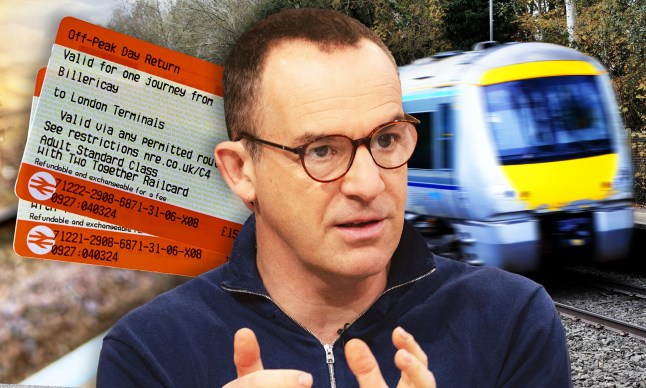

Looking to shave a few pennies off your UK rail travel? According to Martin Lewis, you’ve got just four days to unlock a nifty discount.
The beloved Railcard is a widely used way to unlock savings on UK-wide train travel – and some of them, including the 16-25 and 26-30 versions, can even be connected to an Oyster card to whack 1/3 off off-peak travel on selected TfL services.
Now, the money-saving expert has reminded rail enthusiasts that there’s a limited period to nab a cheeky 25%-off deal – and pay £22.50 for a one-year Railcard or £52.50 for three years.
At present, the price comes in at £30 per year (or £70 for three years). This is set to rise to £35 and £80 respectively on March 2, as explained in this week’s MoneySavingExpert.com newsletter.
If you’re new to either TrainPal or Trip.com (both of which are third-party booking sites), you can use an exclusive code to access 25% off a digital Railcard – before the new price hikes.
‘To get 25% off a digital Railcard via TrainPal, use the code MSE25 (if buying through its app you’ll also need to purchase a train ticket to activate the Railcard…if buying through its website you won’t need to do this),’ the MSE newsletter reads.

If you’re going via Trip.com, simply use the code MSETRIPRC25, though you’ll need to buy a train ticket to activate it, and this needs to be done before March 2.
The same applies if you’re making your purchase through the TrainPal app, but notably, not through the TrainPal website, which will automatically activate it for you.
‘Neither site charges a booking fee, and there’s no minimum spend, so if you need to buy a ticket to activate your railcard, you could just buy the cheapest possible fare,’ MSE adds.
‘While the ticket needs to be bought before 2 March, it can be valid for travel after this date. If you don’t activate your railcard (this only applies to those purchased through the TrainPal app or via Trip.com’s site or app), you’ll be issued an automatic refund.’

Critically, the code can only be used to buy a 16-17 Saver, 16-25 Railcard, 26-30 Railcard, Family & Friends’ Railcard, Network Railcard, Senior Railcard and Two Together Railcard. It doesn’t include the Disabled Person’s Railcard or the Veterans’ Railcard.
You also won’t be able to transfer your purchase to the official Railcard app after purchasing.
What’s more, the codes are valid until 11.59pm on December 31, 2025, but as the newsletter explains, should you choose to purchase after March 1, you’ll pay more after the price hikes on March 2.
Already a customer of TrainPal or Trip.com? Fear not: Martin’s got you sorted.
You can unlock 10% off a digital Railcard and 2% off a train ticket using the code MSE25 (TrainPal), MSETRIPRC10 (for 10% off a digital Railcard through Trip.com), or MSETRIP2 (for 2% off your first train ticket through Trip.com).
How to save money on TfL travel with a Railcard
There’s one little-known hack that could save Railcard holders a considerable amount – and that’s by connecting it to an Oyster card.
Those in the know will be aware that countless Gen Zs (and a handful of Millennials) can unlock 1/3 off during off-peak travel on TfL (and a reduced daily cap) if they have a Railcard – but never before have they been able to access it only using their bank card.
This month, the Mayor of London revealed plans to potentially connect the discount with contactless cards as well as Oysters.
To qualify for the discount, all Railcard holders need to do is bring either their 16-25 Railcard or their 26-30 Railcard with them – just as they would when getting on a train out of London.
Then, they can ask any TfL staff member to connect it for them – which can be done in mere seconds at an Oyster top-up station.
But it isn’t just young people who qualify for the discount: it also works on the Senior and HM Forces Railcards.
At present, the daily cap for various zones stands at £8.50 (Zones 1-2), £10 (Zones 1-3), £12.30 (Zones 1-4) and £14.60 (Zones 1-5).
While the Railcard discount won’t save any money on the daily commute (as it doesn’t work during peak times), it’ll reduce the price of an off-peak journey worth £2.80 (between Zones 1 and 2) to just £1.87.
Do you have a story to share?
Get in touch by emailing MetroLifestyleTeam@Metro.co.uk.
25 Feb, 2025 | Admin | No Comments
Ofgem increases energy price cap again – here’s how much your bills will be
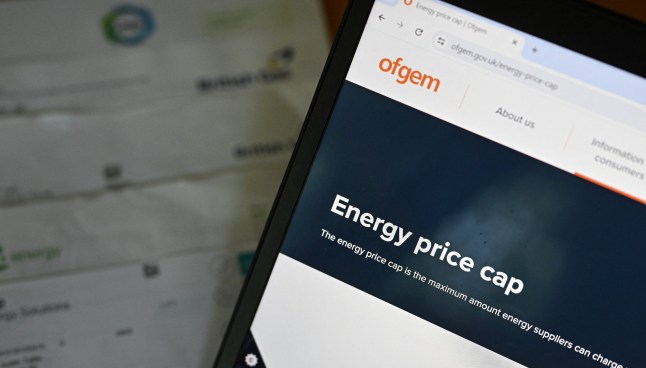

Energy prices are rising yet again after Ofgem hiked the cap by 6.4%.
Annual bills for electricity and gas are estimated to reach around £1,849 for the average household in England, Scotland and Wales from April 1.
This rise of more than £100, up from £1,738, is being largely blamed on an increase in the wholesale price of oil and gas, the energy regulator said.
Ofgem chief executive Jonathan Brearley said: ‘We know that no price rise is ever welcome, and that the cost of energy remains a huge challenge for many households.
‘But our reliance on international gas markets leads to volatile wholesale prices, and continues to drive up bills, which is why it’s more important than ever that we’re driving forward investment in a cleaner, homegrown system.’
What is the energy price cap and who sets it?

Every three months, Ofgem – the government energy regulator – assesses the energy market and sets a new maximum price per unit providers can charge households on a standard, or default, tariff.
On January 1, this rose by 10%. It means 2025 is turning out to be a year of rising energy prices.
But it is still low compared the the peak of the energy crisis that followed Russia’s full-scale invasion of Ukraine three years ago, just as the opening up of economist post-lockdown was starting to fuel inflation.
Skyrocketing wholesale costs, associated with Europe’s turn away from reliance on Russian gas, pushed the energy price cap to its worst level yet – £4,279.
It fell to £2,500 by June 2023 thanks to the government’s emergency Energy Price Guarantee. By July last year, it reached a low of £1,568 before the current rise began.
What is the new energy price cap and what does it mean for my bills?

From April 1, when the latest energy price cap kicks in, households paying bills by direct debit face an average annual bill of £1,849.
Until June 30, households on a standard variable – or default – tariff will pay an average of 27.03p per kilowatt hour (kWh), along with a daily standing charge of 53.8p.
For gas, they will pay 6.99p per kWh, along with the daily standing charge of 32.67p.
To help households cope with these rising bills, Ofgem has announced an extension of the debt allowance, intended to support energy suppliers help customers who are struggling to keep on top of bills.
But Brearley warned this may not be enough to help the growing problem. He said: ‘Energy debts that began during the energy crisis have reached record levels and without intervention will continue to grow.
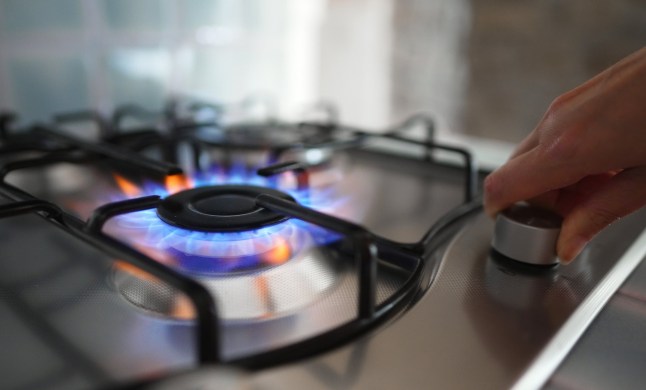
‘This puts families under huge stress and increases costs for all customers. We’re developing plans that could give households with unmanageable debt the clean slate they need to move forward.
‘We welcome the Government’s support for these plans, and their plans to expand the Warm Home Discount, which will also offer financial help to nearly three million more households that need it most.
‘If anyone is worried about paying their bills, I would urge them to reach out to their supplier to make sure they’re getting all the help they can.
‘Where possible, switching or fixing tariffs now could also help to bring costs down and provide certainty over coming payments.’
Should I take a meter reading?
Expert advice is to submit a meter reading when prices rise so you won’t be charged the wrong rate for use that pre-dates the rise.
Taking a reading later means you could be charged a higher rate for energy used before the price increased.
Can I fix my energy tariff and what is happening to prepayment customers?
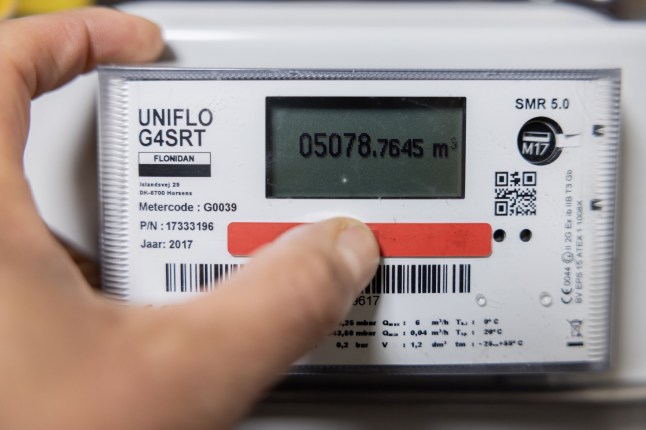
A default tariff puts you at the whim of fluctuations in the energy markets. You could see your bills drop, but equally they could soar.
If you want more stability, you could opt into a fixed-price deal that sets your tariff for a specific period of time. Often this is for a year.
Four million households have made this move since the last price cap was announced in November, according to Ofgem.
The largest move to fixed tariffs since the energy crisis, it brought total on fixed-price plans to 11million.
Is the government doing anything to help?
Energy Secretary Ed Miliband has announced new proposals that would mean nearly three million more families receive the £150 Warm Home Discount next winter.
Calling the latest rise in the cap ‘worrying news for families’, Miliband said the government is ‘determined to do everything we can to protect people from the grip of fossil fuel markets’.
He added: ‘Expanding the Warm Home Discount can help protect millions of families from rising energy bills, offering support to consumers across the country.
‘Alongside this, the way to deliver energy security and bring down bills for good is to deliver our mission to make Britain a clean energy superpower with homegrown clean power that we in Britain control.’
But the Conservative Acting Shadow Energy Secretary Andrew Bowie said the hike was a ‘betrayal to the families who Ed Miliband promised to save £300 on their bills’.
And Liberal Democrat leader Sir Ed Davey called for the increase to be scrapped for the pensioners who recently lost their Winter Fuel Payment.
Get in touch with our news team by emailing us at webnews@metro.co.uk.
For more stories like this, check our news page.
19 Feb, 2025 | Admin | No Comments
New Zealand tourism slogan slammed for sounding like ‘we’re in a clearance bin’


New Zealand’s latest tourism campaign has not achieved the effect it was hoping for.
Instead, the new tagline, ‘Everyone must go!’ has caused controversy, with many describing it as ‘tone-deaf’ at a time of record emigration and unemployment rates in New Zealand.
The marketing ploy launched last weekend on social media and radio and was designed to encourageAustralians – the country’s biggest tourism market – to visit.
But the advert, which cost $500,000 (£226,494), has drawn backlash. Critics, including Labour MP Cushla Tangaere-Manuel, have questioned the slogan’s quality and cost.
RNZ, New Zealand’s public media service, shared the campaign on their socials, reporting that residents have been mocking the slogan.
‘Everyone must go? They are going, leaving in droves because they have no work or prospects left here,’ one person commented, while another questioned: ‘How much for that branding?’

Others said they were embarrassed by the advert, while further commenters suggested it was ‘trying to fill the vacancies made by record Kiwis that left.’
Green Party tourism spokesperson Celia Wade-Brown told RNZ: ‘I think ‘Everyone Must Go’ might refer to the need for toilets in some of our high-tourist spots. I mean, the queues are ridiculous’
Cushla Tangaere-Manuel, Labour’s tourism spokesperson agreed that it ‘makes New Zealand sound like we’re in a clearance bin at a sale.’
Tangaere-Manuel referred to the ‘many cuts’ taking place across the country, and stated: ‘The irony of that messaging is, that’s how Aotearoa New Zealanders are feeling right now.’ Aotearoa is the Māori name for New Zealand.
However, government officials have been defending the advert.
In a news release, Tourism Minister Louise Upston said: ‘What this Tourism New Zealand campaign says to our Aussie mates is that we’re open for business, there are some great deals on, and we’d love to see you soon.’
Prime Minister Christopher Luxon said he ‘[knows] there’s lots of chat about whether everyone loves the slogan or not.’ But ‘the fact that we’re talking about it is a good thing.’
The campaign comes at a time of mounting job cuts, high cost of living, and mass relocation.
New Zealand’s economy has been struggling in recent years, falling into a technical recession in the third quarter of 2024.
HSBC described the country as ‘suffering the biggest hit in the world in 2024’ as interest rates and inflation strained the country’s economy.

Recent data released by Statistics New Zealand revealed that 127,800 people left the country in the 12 months through November. This was a 28% rise compared to last year.
These figures also mark the highest number of people leaving the Pacific nation in an annual period at any point in history.
Last year, over 3.3 million tourists visited New Zealand – a 12% increase from 2023. Out of these travellers, 1.2 million were from Australia.
In January, New Zealand announced they would relax visa rules to allow digital nomads to work remotely for a foreign employer, in the hope of boosting visitor spending.
12 Feb, 2025 | Admin | No Comments
Martin Lewis shares ‘urgent’ steps to save £100s ahead of nationwide bill hike
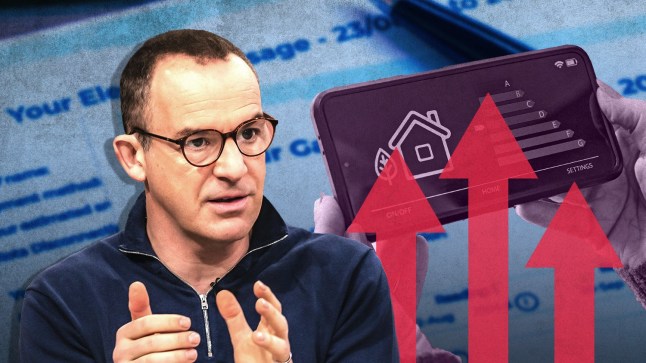

According to Martin Lewis, 80% of households in England, Scotland and Wales currently overpay for energy — and in the coming months, it’s only going to get worse.
In the latest edition of his newsletter, the Money Saving Expert founder shared the ‘bad news’ that the Ofgem Energy Price Cap is due to increase by more than expected in April.
Based on current wholesale rates, utilities firms are predicting a rise of 5% to 7%, following a 1% rise in January.
That means the minimum bill for someone with typical dual-fuel use paying by Direct Debit will go up by between £87 and £122 a year.
But thankfully, there is a way to avoid the worst of the hike, with Martin claiming it could result in a typical annual saving of £200.
And the personal finance guru’s advice is simple: ‘Compare to find your cheapest fix and lock in a rate now.’

‘A fix means the rate you pay for energy can’t change (though use more and you’ll pay more),’ he adds. ‘The current cheapest is almost 7% less than today’s cap, which is around 13% less than it’s predicted to be after April.’
The exact fixed rate tariff that’s best for you will depend on your region and how much energy you use, so put your details into a comparison tool (like MSE’s Cheap Energy Club) to see more personalised options.
Regardless of which deal you go with though, it’s vital you act ‘urgently’.
The new price cap will come into play on April 1 and will last for three months, so it definitely has to be before then.
However, Martin also explains: ‘There are only a couple of cheap fixes left – many have been pulled as underlying wholesale rates have risen. So getting it done ASAP is safest.’
Popular price capped tariffs
If you’re on one of the following, what you pay is determined by the price cap, which Martin says means you’re ‘likely overpaying and should sort now’.
- British Gas Standard Variable
- EDF Standard (Variable)
- E.on Next Next Flex
- Octopus Flexible Octopus
- Ovo Simpler Energy
- Scottish Power Standard
Alongside fixed rate tariffs, it’s worth looking into specialist alternatives that could save you cash.
EDF’s new Simply Tracker Extra tariff, for example, slashes £100 a year off the standing charge, and could be good for those with lower usage (roughly under £135 per month).
Alternatively, there are electric vehicle tariffs which could help EV drivers keep costs down, and rapid price-change options offering lower prices outside of peak periods for those who are able to shift their daily usage routine.
If you’re still struggling to pay, Martin recommends speaking to your energy provider to see how they can help.
‘Be polite and straight with it, and make sure you explain if you’re vulnerable,’ he says.
They may be able to put you forward for a hardship and debt grant, or work with you to negotiate a payment plan you can afford – everything’s decided on a case-by-case basis.
Under Ofgem rules, suppliers are obligated to help struggling customers, so get in touch with yours as soon as possible if you’re worried about your ability to pay.
How can I lower my energy bills?
Amy Knight, personal finance expert at the financial comparison website NerdWallet UK, told Metro: ‘While cutting down on energy use can help save money on bills, this isn’t always an option. Instead, focus on getting more value from the money you spend heating your home.’
Here are her top tips to keep fuel bills low this winter:
Ask for a refund if you’re overpaying into your energy bill by direct debit
If you’re several hundreds or even thousands in credit, your direct debit is probably set too high.
You can ask for a refund of most of the balance and adjust your direct debit to be lower. Be aware though, it is normal to be in credit this time of year because most households use less energy in the summer versus the winter when we have the heating on.
How hot do you need your water?
Heating water uses a lot of energy, so you can turn down the flow temperature of your boiler to shave a little off your bills.
As long as the water from your hot tap is comfortable to have a bath in, you don’t need to set it any hotter. You can do this manually or you may be able to ask a heating engineer to fit a device called a ‘weather compensator’.
Remember where warm air comes from
Keep radiators uncovered to maximise the benefit when they’re on. If you have long curtains covering your radiators, leave them open to make sure the warm air circulates into the room, not out of the window.
Look at the label
When shopping for a new appliance such as a washing machine or fridge, look at the efficiency ratings. If your budget can stretch to A or B-rated white goods, these can help lower your energy usage long term.
Do you have a story to share?
Get in touch by emailing MetroLifestyleTeam@Metro.co.uk.
